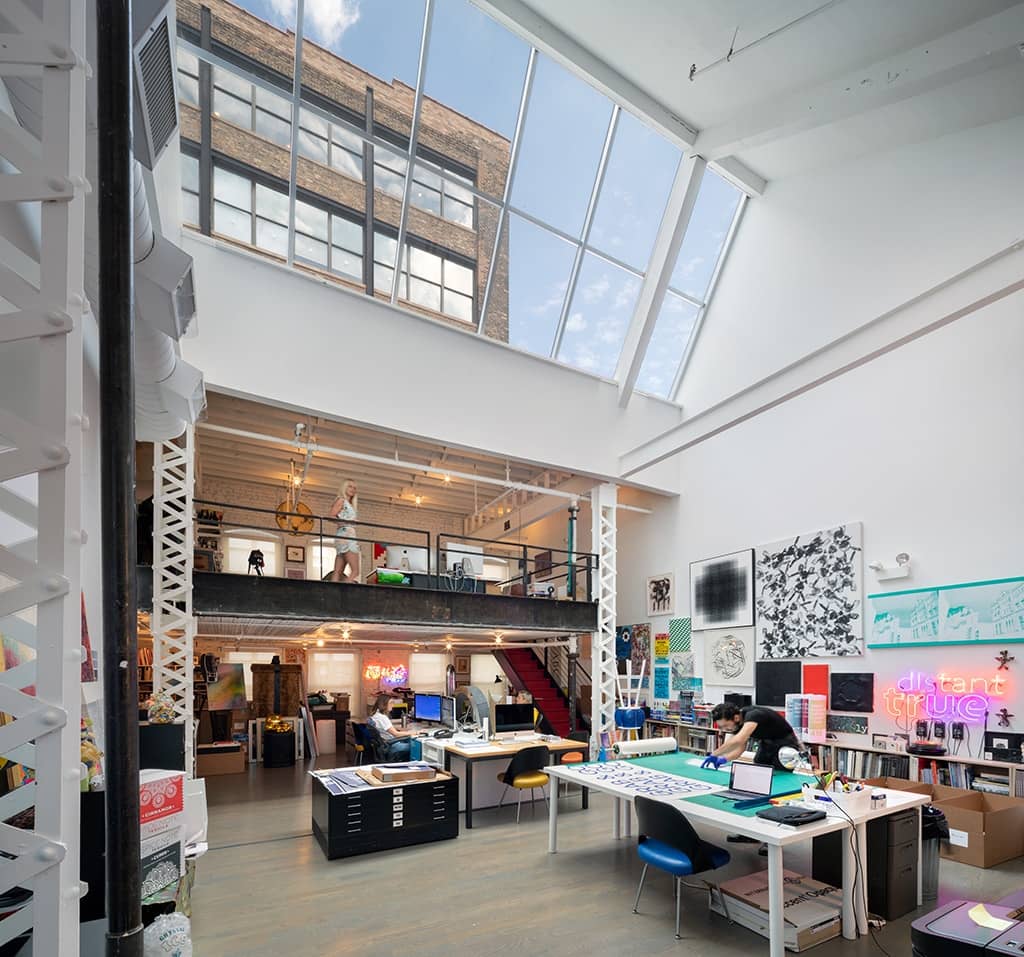What if $870 billion in annual e-commerce sales still only represents the “very early innings of digital disruption” for the retail industry? The implications for CRE’s e-commerce industrial sector, which serves that huge consumer demand, might be hard to imagine.
Those eye-opening words came from Jason Goldberg, a fourth-generation retailer and the chairman of the board of directors of shop.org, the digital retail arm of the National Retail Federation, who backs up his assertion by pointing out that the growing e-business segment in the U.S. still only accounts for 13 percent of total retail sales versus more than 46 percent in China, according to eMarketer.
Comparisons aside, an ever-growing consumer appetite for e-commerce has stoked record demand for warehouses and other logistics infrastructure. What’s next for the e-commerce industry and how is this sector leading the demand for industrial real estate? Let’s take a look.
High Volume Means Big Opportunity
E-commerce sales reached nearly $900 billion nationwide in 2021, according to the U.S. Department of Commerce Retail Indicator Division. That amounted to a 14.2 percent increase over 2020 and a whopping 50.5 percent increase over pre-pandemic 2019. E-commerce represented 13.2 percent of all retail sales nationally in 2021.
Chain Reaction & The Last Mile
It wasn’t a shock to anyone that a global pandemic accelerated the adoption of e-commerce sales. People in quarantine were quite naturally going to rely on the safe, electronic way to shop.
The shock did impact the supply chain, however. Surges in demand for online goods during COVID-19, coupled with affected overseas sourcing, highlighted the need to rethink supply chain management.
To mitigate the risk of disruption, many e-commerce retailers are increasing diversification, i.e., relying less on any one country or company as a supply source, according to JLL’s U.S. Ports, Airports & Global Infrastructure Group. Regionalizing supply chains gets them closer to customers, including the all-important “last mile” of delivery. The JLL Group also recommends distribution centers closer to parcel hubs, increasing transportation options and expanding the number of automated facilities.
The Space Race
E-commerce growth and supply chain adjustments have driven demand for industrial CRE to nearly unseen levels. Producers of staple goods especially had to scramble for additional warehouse capacity and solutions to deliver orders faster by being closer to their customer base.
Such inventory concerns, in addition to increased e-commerce volume, spurred the need for even more warehouses and distribution centers, which make up about 70 percent of the sector, according to CBRE’s global head of industrial and logistics research, James Breeze. Breeze said that the pursuit of storage facilities for extra inventory or “safety stock” became a major trend as companies looked to avoid the supply chain disruptions of 2020.
After accounting for 28.2 percent of all industrial absorption from 2016 through 2019, e-commerce companies increased that proportion to approximately 40 percent from 2020 through 2021, according to Cushman & Wakefield. E-commerce supply chain operations require typically three times more warehouse and logistics space than a traditional brick-and-mortar supply chain.
Additionally, Breeze saw heightened demand from third-party logistics companies (3PLs) that manage distribution and fulfillment for other firms. A year into the pandemic, they were the most active occupier of large industrial space at 26 percent market share.
CBRE reported that the average asking rent for industrial space increased 11.8 percent year-over-year after first quarter to a record-high $8.94 per sq. ft. The report added: “Demand from occupiers needing safety stock to counter supply chain disruptions should result in further rental rate appreciation and a record-low vacancy rate despite a large amount of new development this year.”
What’s Next for E-Commerce and CRE?
In May 2022, Amazon began shedding warehouse space in response to a slowdown in its e-commerce operations. While some interpreted this as an indicator that the appetite for industrial space was waning, Wealth Management found that Amazon was divesting itself of older mid-market warehouses through subleasing in favor of modern, more strategically located facilities.
With demand for industrial space still outpacing supply, expect e-commerce to grow nearly 6 percent per year on average (adjusted for inflation) over the next decade, according to an April report by CBRE Econometric Advisors (CBRE EA). E-commerce occupiers are projected to continue to account for between 35 to 40 percent of industrial demand as consumer shopping habits aren’t projected to fall off from the current upward trend.
The key industrial CRE drivers, consumption, trade, supply-chain reconfiguration, and e-commerce are all on the rise, asserted ProLogis, the largest industrial CRE company in the world. Industrial/distribution space ranked first for both investment and development prospects, as it has for nine straight years dating back to 2014, according to PwC and Urban Land Institute’s Emerging Trends in Real Estate 2022.
Cushman & Wakefield forecasts that rent growth for warehouse and logistics space should rise by more than 15 percent over the next two years with Class A assets and new construction fetching even higher rates. Globally, CBRE forecasts that as much as 2.2 billion square feet of additional e-commerce-dedicated logistics space will be required to support the growth of internet sales over the next five years.
All of this is good news for CRE’s industrial sector, which has enjoyed strong demand, falling availability and above-average rent growth over the last decade. And the sector and U.S. trade as a whole will be even more improved after its struggles with supply chain management are enhanced with new investments in technology, automation, and strategic site selection — all of which are likely to support increased online sales in the future, as Cushman & Wakefield contends.
If the past two years have been an exercise in having to learn the hard way, then e-commerce and industrial real estate will be hard to stop. Learn more about e-commerce in commercial real estate, visit KBS.com/Insights.




